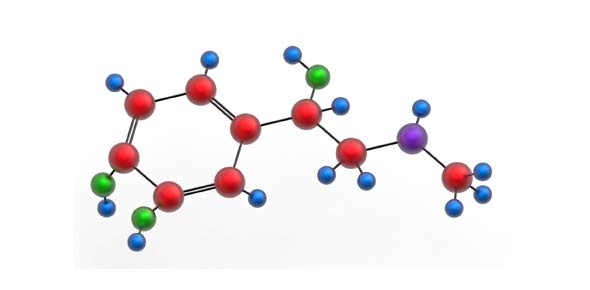Multivalent Compounds (Cilts)

Try these practice questions!
- 1.
What is the formula for Tin (II) Oxide?
Explanation
The formula for Tin (II) Oxide is SnO.Rate this question:
- 2.
What is the formula for Copper (II) Oxide?
Explanation
The formula for Copper (II) Oxide is CuO. This is because Copper (II) refers to the copper ion with a charge of +2, and Oxide refers to the oxygen ion with a charge of -2. To balance the charges, one copper ion combines with one oxygen ion, resulting in the formula CuO.Rate this question:
- 3.
What is the correct subscript for the following formula Iron (II) Carbonate = FeCO_
- A.
1
- B.
2
- C.
3
- D.
4
Correct Answer
C. 3Explanation
The correct subscript for the formula Iron (II) Carbonate is 3. This is because the formula FeCO3 indicates that there are three oxygen atoms present in the compound.Rate this question:
-
- 4.
What is the correct name for the formula SnSO4?
- A.
Tin (III) Sulfate
- B.
Tin (IV) Sulfide
- C.
Tin (II) Sulfate
- D.
Tin (I) Sulfur
Correct Answer
C. Tin (II) SulfateExplanation
The correct name for the formula SnSO4 is Tin (II) Sulfate. This is because the Sn in the formula represents tin, which has a +2 charge in this compound. The SO4 represents sulfate, which has a -2 charge. In order to balance the charges, there needs to be two tin ions to every one sulfate ion, resulting in the name Tin (II) Sulfate.Rate this question:
-
- 5.
What is the correct name for the formula FeI3?
- A.
Iron (III) Iodide
- B.
Iron (II) Iodine
- C.
Lead (IV) Iodide
- D.
Iron (III) Iodine
Correct Answer
A. Iron (III) IodideExplanation
The correct name for the formula FeI3 is Iron (III) Iodide. This is because the formula indicates that there are three iodide ions (I-) for each iron ion (Fe3+). The Roman numeral III in parentheses indicates the charge of the iron ion, which is necessary to balance the charges of the ions in the compound. The other options, Iron (II) Iodine, Lead (IV) Iodide, and Iron (III) Iodine, do not correctly represent the composition and charge of the compound.Rate this question:
-
- 6.
What is the correct name for Fe(NO3)3?
- A.
Iron (III) Nitrate
- B.
Iron (II) Nitrate
- C.
Iron (I) Nitrate
- D.
Iron (IV) Nitrate
Correct Answer
A. Iron (III) NitrateExplanation
Fe(NO3)3 is correctly named Iron (III) Nitrate. This is because the compound contains iron (Fe) in its +3 oxidation state, which is indicated by the Roman numeral III in the name. Nitrate (NO3) is the anion present in the compound.Rate this question:
-
- 7.
What is the correct name for Cu2SO4?
- A.
Copper (I) Silicate
- B.
Copper (I) Sulfite
- C.
Copper (I) Sulfide
- D.
Copper (I) Sulfate
Correct Answer
D. Copper (I) SulfateExplanation
The correct name for Cu2SO4 is Copper (I) Sulfate. This is because the compound Cu2SO4 consists of copper ions with a +1 charge (Cu+), and sulfate ions with a -2 charge (SO4-). When naming ionic compounds, the Roman numeral is used to indicate the charge of the cation. In this case, the Roman numeral (I) indicates that the copper ion has a +1 charge. The anion, which is the sulfate ion, does not require a Roman numeral because it is a polyatomic ion with a fixed charge. Therefore, the correct name for Cu2SO4 is Copper (I) Sulfate.Rate this question:
-
- 8.
What is the correct name for Cu2CO3?
- A.
Copper (II) Carbonate
- B.
Copper (III) Carbonate
- C.
Copper (I) Carbonate
- D.
Copper (II) Bicarbonate
Correct Answer
C. Copper (I) CarbonateExplanation
Copper (I) Carbonate is the correct name for Cu2CO3. In this compound, copper has a +1 oxidation state, indicated by the Roman numeral I in parentheses. Carbonate is a polyatomic ion with a -2 charge. Therefore, the compound is formed by combining two copper ions with one carbonate ion, resulting in Cu2CO3.Rate this question:
-
- 9.
The formula for Lead (IV) Oxide is PbO
- A.
True
- B.
False
Correct Answer
B. FalseExplanation
The correct answer is False. The formula for Lead (IV) Oxide is PbO2, not PbO. The Roman numeral IV indicates that lead has a +4 oxidation state, which means it forms a compound with two oxygen atoms. Therefore, the correct formula is PbO2.Rate this question:
-
- 10.
What is the correct name for the formula for PbSO4?
Correct Answer
Lead(II) sulfate , Lead 2 sulfateExplanation
The correct name for the formula PbSO4 is Lead(II) sulfate.Rate this question:
Quiz Review Timeline +
Our quizzes are rigorously reviewed, monitored and continuously updated by our expert board to maintain accuracy, relevance, and timeliness.
-
Current Version
-
Jan 15, 2024Quiz Edited by
ProProfs Editorial Team -
Oct 04, 2011Quiz Created by
Zach88
- Atomic Theory Quizzes
- Chemical Bonding Quizzes
- Chemical Reaction Quizzes
- Chemistry Practice Quizzes
- Clinical Chemistry Quizzes
- Electrolysis Quizzes
- Functional Group Quizzes
- Gas Quizzes
- General Chemistry Quizzes
- IBSL Chemistry Quizzes
- Medicinal Chemistry Quizzes
- Molecule Quizzes
- Periodic Table Quizzes
- Rate Of Reaction Quizzes
- Reaction Quizzes
- Soap Quizzes
- Solution And Mixture Quizzes
- State Of Matter Quizzes
- Stoichiometry Quizzes
 Back to top
Back to top


